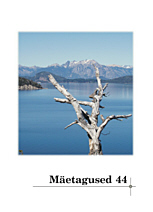Ränne ja autobiograafia. Rändest ja väljarändaja kohanemisest Argentinas 1920. ja 1930. aastatel
Migration and Autobiography. On the Migration and Adaptation of a Voluntary Migrant in Argentina in the 1920s–1930s
Author(s): Aivar JürgensonSubject(s): Anthropology
Published by: Eesti Kirjandusmuuseum
Keywords: adaptation; Argentina; autobiography; emigration
Summary/Abstract: Approximately 16,000 people left Estonia during 1924–1938. Among the new destinations, the most important ones were South American countries, especially Argentina and Brazil. At the time, Argentina was an attractive destination for immigrants. In the first half of the 20th century, Argentina surpassed the majority of European countries with regard to the income per capita, health care and education. The first larger group of Estonians (30–50 people) arrived in Argentina in 1924. In each following year, the number of Estonian immigrants fluctuated between 40 and 60, so that by 1930, about 300–350 Estonians lived in Argentina, mostly in the capital Buenos Aires. The current article examines, on one hand, the relationship between (external) environmental conditions of migration and (internal) personal migration related decisions. On the other hand, the micro level of migration is analysed through a biographical narrative, particularly focusing on the impact of personal migration and the adaptation story on the retrospective autobiography. The micro level of migration is observed mainly on the basis of an autobiographical novel by Raimund Põdder. His earlier written travelogue, and the letters and surveys of other Estonian settlers in Argentina offer opportunities for substantial comparisons. Text examples from the writings of R. Põdder, presented in this article, are inclined to give evidence of a typical voluntary labour migrant: young, unmarried man, whose first phases of adaptation pass without obstacles. However, some background information allows the conclusion that the orientation phase of the adaptation was not without conflicting moments which could leave a nostalgic stamp on the retrospective analysis of his personal life.
Journal: Mäetagused. Hüperajakiri
- Issue Year: 2010
- Issue No: 44
- Page Range: 129-152
- Page Count: 24
- Language: Estonian

